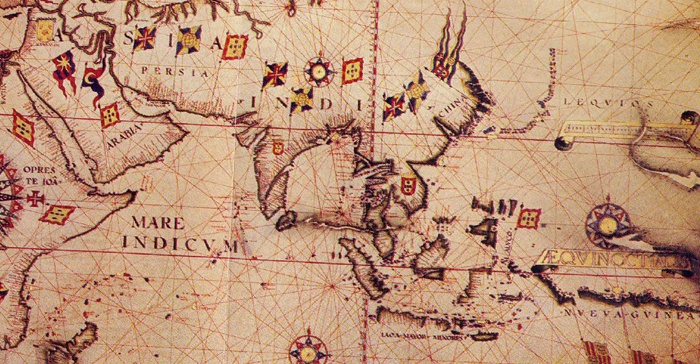
How did African plants and animals get to India? The Indian Ocean Archaeology Network is uncovering the long-term history of trade and interaction across this geopolitical corridor.
As the world’s two most populous countries, India and China, battle it out for superpower status, the Indian Ocean is growing in prominence as a key geopolitical region. But human memory is short when compared with the history of humankind. Archaeological evidence has unearthed a number of insights indicating that this Indian Ocean connection has been a key region of cultural interaction and trade for 2,000 years.
“There are some crops and animals that we know originated in India, but today can be found in Europe and Africa,” says Shadreck Chirikure, Associate Professor in Archaeology. “Similarly, we find African plants and animals in India. What was the history? How did they get there?”
Through the Indian Ocean Archaeology Network, a World Universities Network (WUN) collaboration, archaeologists working within this region—which includes East Africa, and stretches up the Persian Gulf past India to China and down to Australia—can now link up existing projects and build a framework for collaboration that might build a more complete understanding of its past.
“The Indian Ocean Archaeology Network is an initiative that aims to uncover the long-term history of trade and cultural interaction within this strategic geopolitical corridor,” says Chirikure, who is part of the WUN collaboration.
Chirikure’s research is focused on the interior of Southern Africa, specifically Great Zimbabwe and Mapungubwe, and the connections between the hinterland and the coastal regions. While the Indian Ocean Archaeological Network is focused on sea links, it is important to acknowledge that those sea links were supported by land links that played an integral role in trade.
“It is from the inland areas that 99% of those commodities traded actually come,” notes Chirikure. “Gold was traded in East Africa, for instance; but that gold came from the interior. My research seeks to understand how it was mined, produced and traded.”
This, says Chirikure, is important to understand: most of our knowledge is acquired from the Western world, but we need to ask what Africans were doing before Western intervention. Archaeological evidence proves that mining, production and commodity trading was taking place—activities that we are only now beginning to learn about.
The long timeframes of archaeology offer a broad insight into the many challenges facing humankind today. The network will help researchers understand how humans faced similar challenges of changing environments and natural disasters in the past. Hopefully, these insights will help us understand better how to face issues such as climate change today.
The Indian Ocean Archaeological Network is also concerned with threats to archaeological heritage across the region, especially in coastal and island communities threatened by climate change.
Chirikure says WUN has allowed him to interact and collaborate with other researchers he would probably never have met otherwise.
“We may all be archaeologists, but we use different techniques and methods. We generally attend conferences and network within specific niches,” he says. “However, through WUN, we met with a variety of researchers in the field, which allowed for great networking opportunities.”
An important outcome of this for Chirikure’s work was his collaboration with Professor Mark Horton, Professor in Archaeology at the University of Bristol. Together, the pair will map out Great Zimbabwe using geophysical techniques, with equipment based at Bristol.
“It is often through the more ‘out-of-the-box’ or unlikely collaborations that the best work is done,” says Chirikure. “WUN’s contribution to this kind of research is thus invaluable.”
This article is courtesy of the University of Cape Town and can be found online at: http://www.uct.ac.za/dailynews/archives/?id=8993. Image of Asia Oceania by Câmara via Wikimedia Commons.